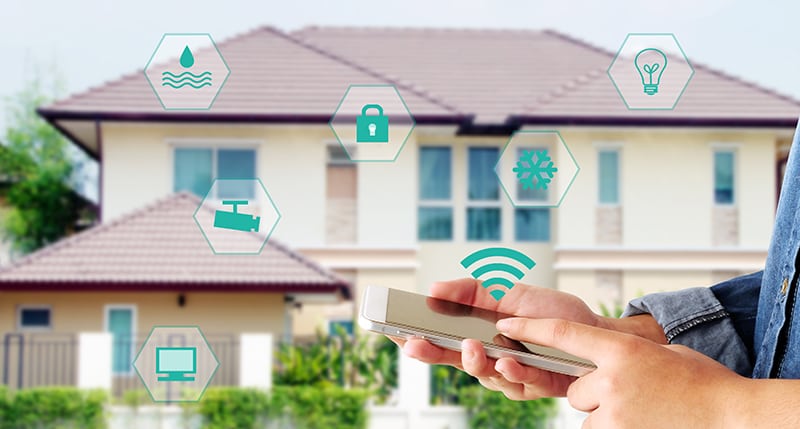No one is quite sure what the next generation of smart homes will look like, but a great many of your consumers want one – and energy utilities are uniquely positioned to lead the way, whether by pioneering new technologies or engaging in affinity partnerships.
Demand for Smart Homes Growing Across Demographics

Energy is as ubiquitous and necessary to the smart home as broadband and wifi, and the number of those interested in the technology is only matched by the ways it can be utilized. Among Millennials, one in four own a smart home device and four in ten want one. Older Millennials have embraced the idea wholeheartedly, while younger ones are a bit more reserved, because of concerns about privacy issues.
Millennials are willing to put their money where their interest is. Eighty-six percent are willing to pay up to 20 percent more to purchase or rent a home with smart home technology. And they aren’t the only generation willing to do so. Sixty-five percent of Baby Boomers and 57 percent of Generation X also would put down more cash for smart homes. Generation Z, the oldest of whom are in their early twenties and beginning to establish their own homes, are even more likely than Millennials to want smart homes.
Renters have become a larger segment of users and now are just as likely as homeowners to have a smart home device as smart home devices have become less expensive and easier to use. The largest hurdle is encouraging users to see past Alexa and Google to the vast number of products available to them. The smart home landscape is expected to change over the next five years, with the entertainment share slowing, while smart appliances and home automation see a boost in popularity.
Most Wanted: Convenience and Security
Smart Home devices fall into three major categories: practical and functional, such as smart appliances, thermostats and lighting and personal item trackers; lifestyle and entertainment, such as remote speakers and streaming televisions; and safety and security, such as alarm systems, smoke and carbon monoxide detectors and smart safes and locks. Devices focusing on functionality and security align with products some energy utilities are already exploring.
In a poll of Coldwell Banker sales associates, 65 percent of buyers wanted security devices; 57 percent wanted temperature control; 48 percent wanted safety features such as smart locks; 46 percent wanted lighting features; 42 percent wanted entertainment devices; and 23 percent wanted smart appliances.
An Essence Group report found that Millennials are most interested in devices that provide convenience, while Generation X likes security and energy savings. Accordingly, the most popular devices are smart thermostats, lighting and locks and connected cameras.
VynZ Research predicts that smart home technology hasn’t even begun to peak with an estimated compound annual growth rate of 14.2 percent to become an $89.9 billion industry by 2024. Users will demand safety, convenience and security and look for flexibility and innovation. North America will be the largest revenue holder in smart home solutions and products.
Affinity Partners: Testing the Waters
While energy companies have begun to enter the smart home market, it is a shift from the traditional business model. To bridge this, utilities should consider an affinity partnership.
An affinity partnership can take three separate, but similar forms, according to the Wharton School. A window strategy gives access to new technologies and developments while exploring potential programs or products and reducing uncertainty; an options strategy is a “calculated bet,” building a platform that can be scaled up or down, based on need and viability. Plus, positioning strategy is a low-risk partnership that offers advantage based on scale or scope or gives access to a new customer base.
Companies seeking an affinity partner should consider companies with shared values and offerings that have practical value, not just “buzz.” Affinity partnerships can help both companies find new eyes for their products or services while connecting their own consumers with services or products that cater to their needs. The more complementary your offerings, the more likely you will boost revenues – without a corresponding increase in marketing costs.
These partnerships are most valuable when they pair noncompetitive brands that share the same values and have a client base that transfers well. The skill is in choosing a partner whose offerings align with your needs.
HomeServe, a national home warranty company, partners with utilities across the nation to offer water, sewer and electrical service line and interior plumbing and electric warranties to their residents. HomeServe maintains a 400-seat, award-winning call centre 24/7/365 and dispatches fully licensed and insured, local contractors after one call. To learn more about an affinity partnership with HomeServe, contact us.

